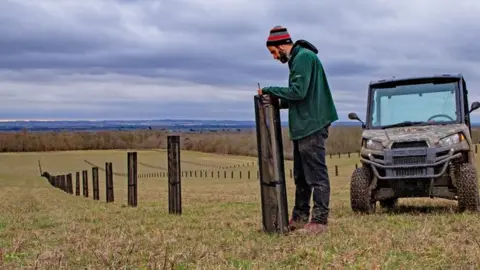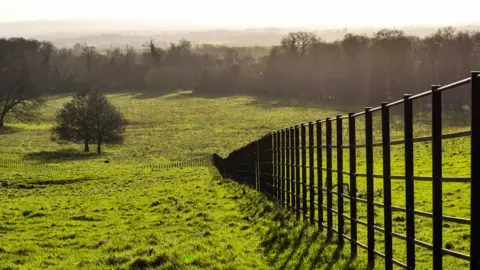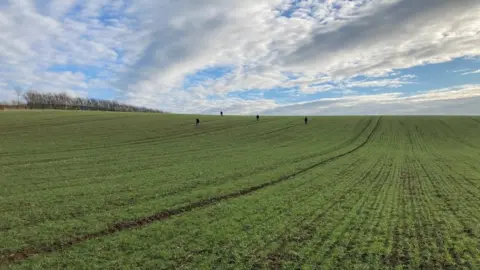Wimpole Estate: National Trust plants 90,000 trees in carbon zero bid
 National Trust
National TrustThe National Trust is carrying out its largest ever tree planting project, adding 90,000 trees to one estate.
The planting, at Wimpole Estate in Cambridgeshire, will help the conservation charity in its ambition to become net carbon zero by 2030.
Woodlands will be designed to capture carbon and enhance cereal crops and grazing, rather than provide fuel.
Project manager Jason Sellars said: "It is the beginning of something exciting that will last for generations."
He added: "We want to demonstrate how action to tackle climate change and to aid nature's recovery can be undertaken in a relatively short space of time."
 Getty Images
Getty ImagesThe planting will include 2,000 apple trees in rows, with the team hoping to generate an income from the produce.
Three months of planting has already taken place on the 1,000 hectare (2,471 acre) estate near Cambridge, following 10 months of planning.
 Getty Images
Getty ImagesMr Sellars said: "In stark contrast to our ancestors, we're planting areas of woodland to capture carbon rather than to give us fuel, while also creating new habitats for wildlife.
"It's been really important to us to fully understand the context of what we are doing in light of the history of the land and the nature that already lives here.
"We have selected the right areas for tree planting - and are planting the right trees in the right places."
He said 14 species of native trees have been planted including oak, hornbeam, wild cherry, field maple and birch, as well as 10 species of shrubs including hawthorn, hazel and spindle.
The varieties would "build resilience into the landscape in the face of a growing number of tree diseases," he said.
 National Trust
National TrustLivestock will be introduced after a three-five-year period to allow the trees to become established.
The project was made possible by a £1.3m investment from the government's Green Recovery Challenge Fund and HSBC UK.
National Trust ecologist Alison Collins said an "excellent number of species" had been recorded on the estate, including 28 types of butterfly.
She added: "As the trees start to grow and the new habitats become established, we obviously hope to see these numbers increase, but also that other wildlife moves in such as additional bat and butterfly species attracted to the new areas of woodland and other habitats."

Find BBC News: East of England on Facebook, Instagram and Twitter. If you have a story suggestion email [email protected]
